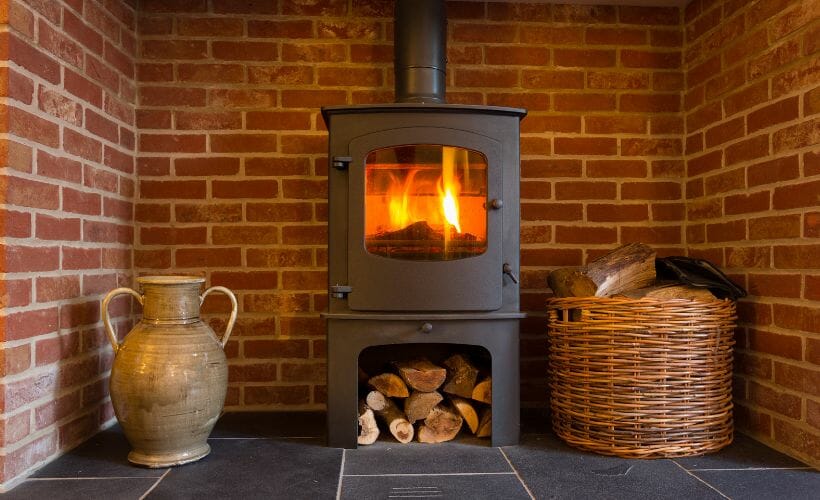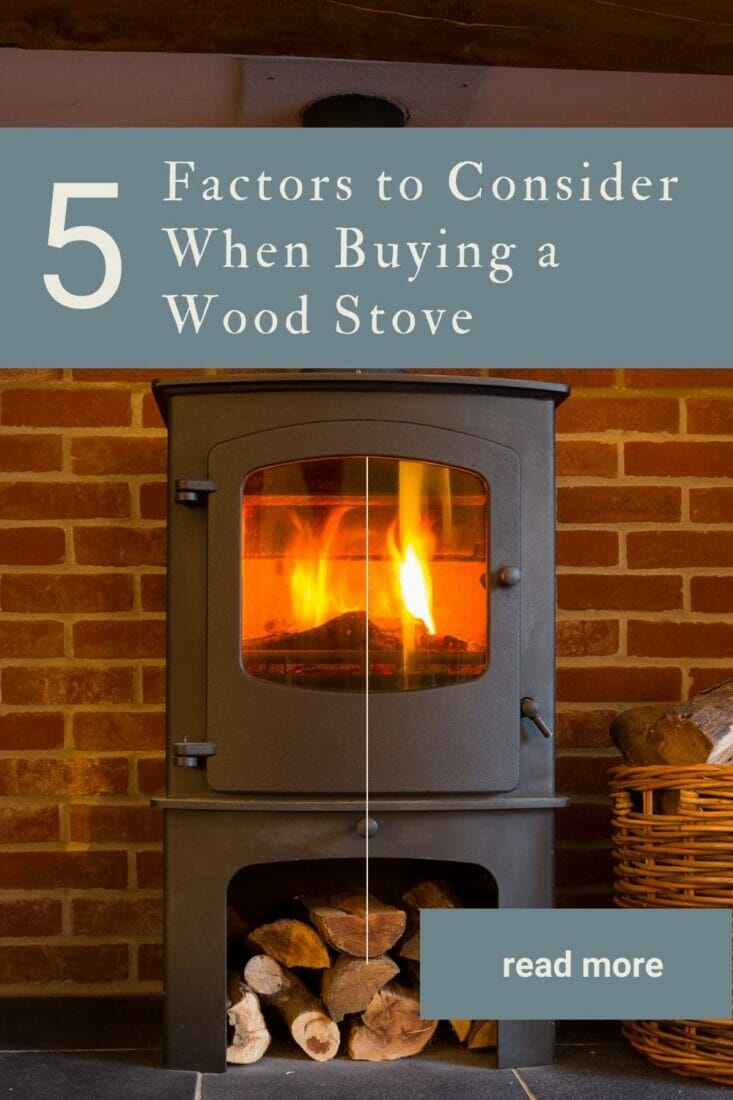Buying a Wood Stove? Make Sure You Read This Guide First
Ready to buy a wood stove? Learn 5 key factors to consider—from size to style—so you can heat your home efficiently and safely all winter long.

There’s nothing quite like the steady crackle of a wood stove on a winter night—especially when you know it’s keeping your home warm without relying on oil or electricity. But buying a wood stove isn’t as simple as picking the prettiest one at the hardware store. From size to safety to style, there’s a lot to weigh before you commit.
Whether you’re looking for a backup heat source or planning to heat your entire home off-grid, here are five key factors to think through before buying a wood stove.
Know Your Heating Needs
Before you choose a stove, make sure you’re also thinking about what you’ll be burning. If you want to get the most heat per log, it’s worth reading up on the best firewood for your wood stove or fireplace. Not all wood is created equal, and choosing the right type will make a big difference in how your stove performs.
First things first: What do you want your stove to do? If it’s just for cozy vibes and supplemental heat, your needs will be very different than someone trying to heat a whole house.
Ask yourself:
- Are you heating one room, or your entire home?
- Do you want it as a primary heat source or a backup?
- How well insulated is your home?
Stoves are often rated in BTUs (British Thermal Units), which help estimate how much space a stove can effectively heat. If you’re on a tight budget or trying to stay frugal, you might also want to explore where to get free firewood for your homestead wood stove—it’s not as hard as you might think, and it can make heating more affordable. A well-insulated 1,000 sq ft space might need a 25,000–40,000 BTU stove, while larger or draftier homes might need something closer to 60,000 BTUs or more.
Choosing the right size matters. A stove that’s too big can overheat your space and waste wood. Too small, and you’ll constantly be feeding it without feeling warm. You’ll also need to think about placement—somewhere central is best for whole-home heating, and you’ll need to meet all local codes for clearance and ventilation.
Consider Size, Style, and Placement
When it comes to stoves, one size definitely doesn’t fit all. You’ll need to balance heating capacity, firebox size, and the physical footprint of the stove itself.
Think about:
- Firebox size: A larger firebox allows for longer burns and less frequent refueling.
- Freestanding stoves vs. fireplace inserts: Inserts are great if you’re retrofitting an old fireplace.
- Layout of your home: Open concept layouts distribute heat better than closed-off rooms.
The style of stove matters too. Do you want something rustic and traditional? Or a sleek enamel model that doubles as a statement piece?
Pro Tip: Before installing, sketch out your floor plan and mark where heat will flow. Rooms that are far from the stove might need a ceiling fan or doorway vent to help move warm air.
Placement should be functional and aesthetically pleasing—and always in line with clearance requirements. Wood stoves need proper spacing from walls and flammable materials. A hearth pad underneath is usually required, and a rear or top vent chimney setup may impact where the stove can go.
Look at Efficiency Ratings
The more efficient your stove, the more heat you’ll get from each piece of firewood—and the less work it takes to keep your house warm.
Higher-efficiency stoves:
- Burn wood more completely, reducing creosote buildup
- Save money on firewood (even if you’re harvesting it yourself)
- Produce fewer emissions, which is better for the environment
Look for an EPA-certified stove, especially if your state requires it. These stoves meet strict standards for emissions and efficiency. Many include secondary burn systems that reignite smoke particles to produce more heat from less wood.
Important: Efficiency doesn’t just impact warmth—it also affects how often you clean your chimney and how much ash you’re dealing with. You can even improve your stove’s efficiency further with heat-powered stove fans, which circulate warm air more evenly without using electricity.
Understand Catalytic vs. Non-Catalytic Stoves
This sounds technical, but it’s worth understanding. EPA-certified stoves come in two main types:
Catalytic stoves:
- Use a catalytic combustor to burn smoke and gases
- Burn longer and more consistently (great for overnight use)
- Require regular maintenance and careful operation
Non-catalytic stoves:
- Simpler to operate
- Great for supplemental or weekend use
- Easier to maintain but may burn less efficiently
Hybrid catalytic stoves combine the best of both worlds, using triple-burn technology to maximize heat output and efficiency. If you plan to use wood as your primary heat source, these are worth considering.
Don’t Forget Appearance, Materials, and Maintenance
Yes, it’s a heat source—but it’s also a big visual element in your home. From finish color to construction material, the appearance of your stove can (and should!) reflect your style.
Common stove materials:
- Steel: Heats quickly, perfect for fast, short bursts of warmth.
- Cast iron: Holds heat longer and stays warm even after the fire dies.
- Soapstone: Heats slowly but provides steady, long-lasting warmth.
Let me tell you, I once sold a soapstone stove for pennies thinking it was junk. Turns out, it just needed a stone replacement—and the buyer’s husband worked in countertops. Still kicking myself over that one.
Also consider:
- Finish options: Matte black is timeless, but enamel finishes in bold colors can turn your stove into a centerpiece.
- Cleaning needs: Smooth enamel finishes show soot and dust more easily than textured matte ones.
- Durability: Some stoves come with repair kits or replaceable parts, especially higher-end models.
Maintenance checklist:
- Annual chimney sweeping is a must
- Check door gaskets and firebricks every season. While you’re maintaining your stove, don’t forget to think about where and how you store your firewood. Smart ways to store firewood—from wood sheds to stacks—can help preserve quality and keep your setup safe and dry.
- Empty ash pan regularly
You can hire a chimney sweep or DIY it with specialized brushes and rods. Just don’t skip it—chimney fires are no joke.
Still Got Questions?
Getting a wood stove soon? Keep this guide handy by pinning it now.

Buying a wood stove is an investment—of money, time, and trust. The right one can heat your home, cut your electric bill, and add a cozy charm that no space heater can match. But you’ve got to find the one that fits your space, your goals, and your lifestyle.
So do your research, ask the right questions, and take your time. If you’re still unsure what types of wood are safe, can you use pine firewood indoors? helps dispel common myths and offers clarity on when it’s okay and when it’s not. A little planning now will keep you warm and happy for winters to come.
Got a wood stove tip or a cautionary tale? I’d love to hear it. Drop your thoughts in the comments below!

